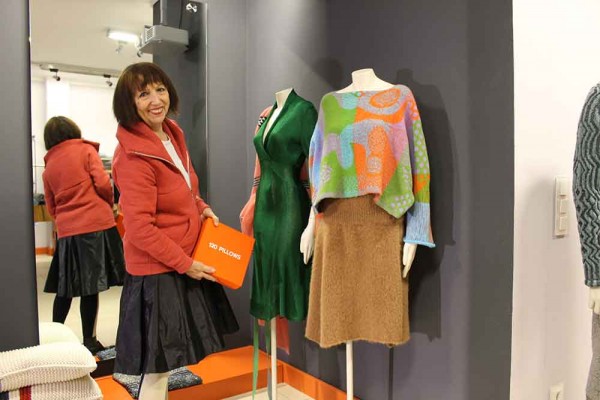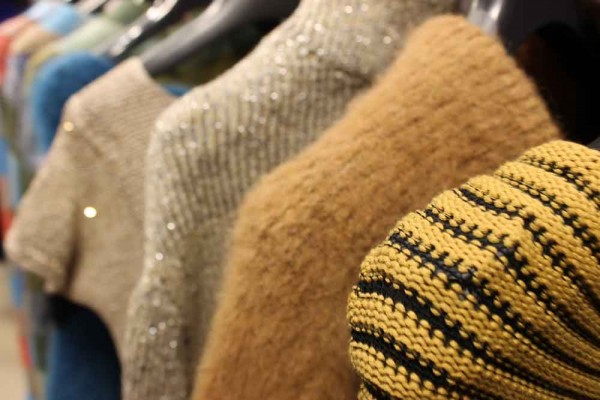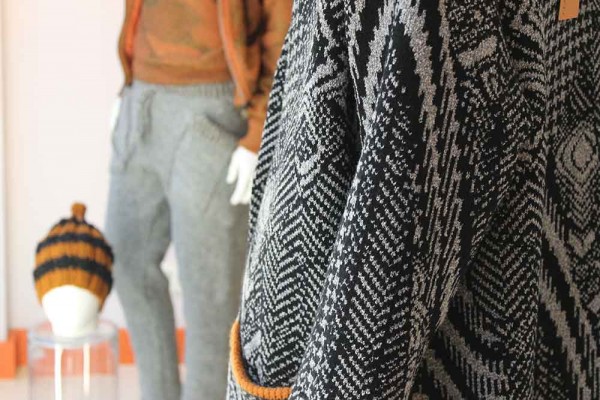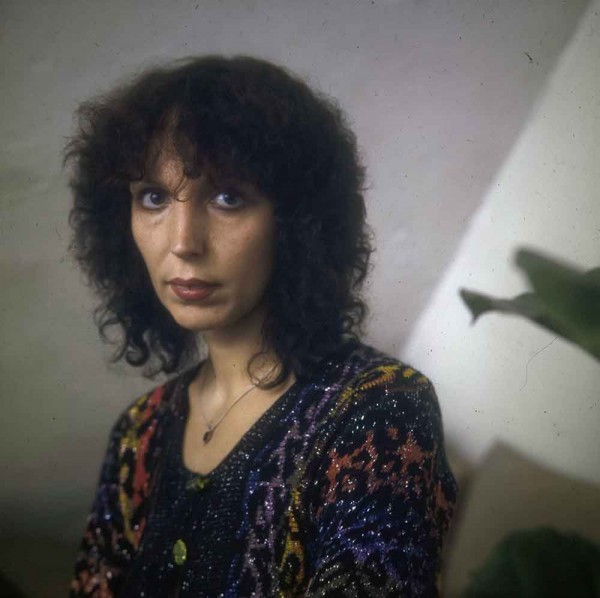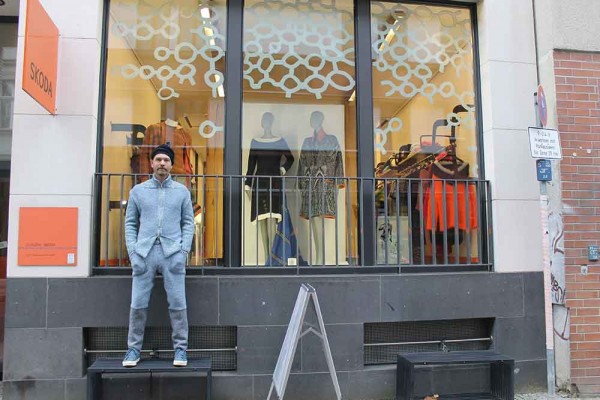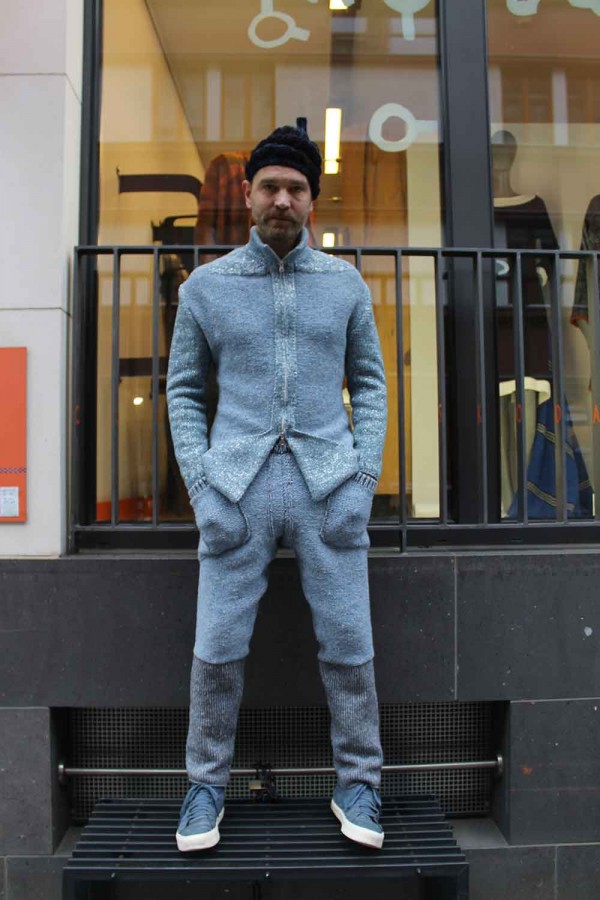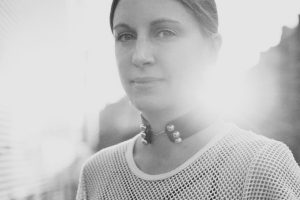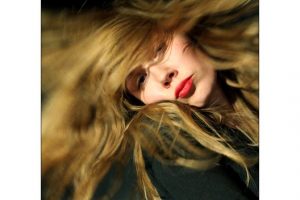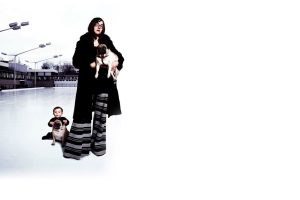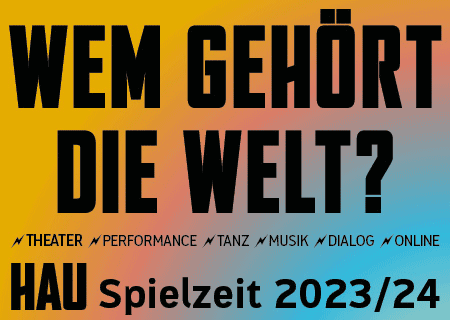Claudia Skoda: “Fashion has never been as cheap and inflationary as today and at the same time absurdly expensive.”
When I moved from NYC to Berlin in the mid eighties I was able to experience the last strides of an underground scene that would make Berlin notorious for outrageous art, music and design for decades to come. It was a whirlpool of creativity and I felt excited and happy to become part it.
One of the main differences to other cities was that most people one could meet were interdisciplinary artists and so most of the friends I made were simultaneously musicians, artists, writers and designers. Interestingly fashion was an integral part of the 80ies art scene, in comparison to today, where it is treated as a separate area of commerce. In 1985 it was common to design and sew your own clothes or at least buy clothes from local Berlin designers. Mainstream fashion was considered boring, embarrassing and cheap because everybody wanted to be individual. The fashion scene was huge and the specific Berlin style of unusual cuts, crooked hats, odd fabrics and hand made accessories was usually presented on international fairs as the oddball show of eccentrics which was then copied as fast as possible because the designs always caught the attention of the international audiences.
Many of the Berlin designers were part of collectives that supported and cheered each other on: Scheederbauaer was a very colorful one, out of which Marc Brandenburg, a successful fine artist today emerged. They specialized in playful fashion accessories (necklaces out of branches and chestnuts), Knitwear (sweaters with knitted on heads and hands in different skin colors) and evening wear (velvety evening gowns with handmade sequins and shells), art, performances, spoken word and collaborations with musicians such as Wolfgang Müller of Tödliche Doris. „Eisengrau“ a knitwear store founded by Bettina Köster and Gudrun Gut of the band Malaria also sold self-mixed tapes and attracted the young in genial dilettantes scene as the like of Blixa Bargeld and Alexander Hacke that would then take over the store at one point filling it with self-made instruments whilst wearing the self made designs.
I had studied fashion design, music and art in NYC so this interaction was paradise for me and it did not take long until I heard the name „Claudia Skoda“ for the first time.
Claudia lived in a legendary loft space, comparable to Andy Warhol’s factory, sharing her space with many artists that were to become very successful. One of them, Martin Kippenberger, lived there for a couple of years, painting the floor and sketching portraits of Claudia and her fashion shows. David Bowie and Iggy Pop also would drop by on a regular basis and everybody wanted to be invited to her fashion shows. Claudia specializes in knitwear and has never been interested in pretty, air-headed models slinking down a runway. She considers her fashion shows to be theatrical productions in which the models are acting or performing. The runways, unusual spaces and music were always carefully and deliberately chosen to create magical, surrealist atmospheres. Her fashion designs knitted in high quality materials are timeless and always unique.
Claudia is a typical Berliner in wanting to stay individual and unfettered by any trends.
I was intimidated by her fame and beautiful show rooms and did not meet her until the early nineties. When I did I was impressed that in spite of being an iconic inspiration and internationally known designer she has kept a friendly attitude and gracious modesty and whenever she appears at an art opening or fashion event people crowd around her, happy to see her, wanting to say hello.
Her store on Mulackstr. 8, in Berlin, Mitte is the fourth she has had since the eighties. Contrary to most other companies, she only sells from her show room or directly from her online shop, not interested in selling out or losing control over the quality of her designs. Each show room was exquisitely arranged by prestigious interior designers to present the knitwear as beautifully as possible. Cate Blanchett, Milla Jovovich, Ridley Scott and many more celebrities are her fans but she is happy that Berlin’s younger generation comes by to buy one of her smaller items. This young and fresh recognition is what she aims for and wants to upkeep.
Danielle de Picciotto: To what extent do you think art and fashion are related?
Claudia Skoda: My approach is that of an artist but with the intention of making fashion. I am very inspired by painting especially minimalism, pop art, futurism, street art and antique art. Music inspires me as well, especially new music of any kind except mainstream. All of these movements are very closely related to each other in my eyes.
Which women inspire you?
Individualists. Rosemarie Trockl, Jenny Holzer, Katharina Fritch, Cindy Sherman, Ulrike Ottinger, Björk, Julia Holter, Angela Winkler, Romy Schneider.
Do environment, politics or ecology play a role in your fashion?
Sustainability is important to me so I produce everything in Berlin. Never in low-wage countries. In my selection of materials I avoid Angora, real Pelts and toxic colors. I also consider climate change in my designs. Seasons play less and less of a role in the creation of my collections.
In your opinion, how has fashion changed in recent years?
Fashion as such has not necessarily changed very much but it has never been as cheap and inflationary as today and at the same time absurdly expensive. Overpriced collections from GUCCI, PRADA and Co. land in outlet sales after a short time so that one can assume that the actual value only serves the image and not the actual quality of the garment. I think that’s a pity.
How do you think fashion trends affect you?
I always try to enforce my own trends and try not to repeat myself. I do not really approve of retro trends, although I am of course attracted to daring fashion experiments, but usually they turn out to only be hype. Nevertheless I find “future vintage” really exciting at the moment.
Why did you focus on knitwear?
The challenge of this medium is to find an unknown image language. To find my own surfaces, my own structures. The possibilities are far from exhausted in knitting. Is there anything more beautiful than a dress knitted directly on the body or an unusual pattern? People often wonder: how did she do that? I love that secretive world in knitting. I’m less interested in traditional craft.
Your new autumn collection is out now, what were your inspirations for it?
For me, “rituals” are my current theme and it is a new way of placing my techniques into a new context, thereby creating modern clothing. My topics are always very abstract and usually have nothing to do with fashion. Researching these topics always leads me to new perspectives, visualizing unfamiliar designs. For example “fuel”, “Skoda Mobil”, “big birds”,” sound” and “animal collectives” were great themes.







